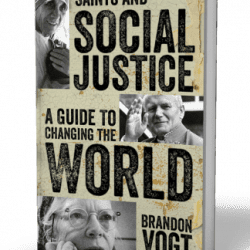 Say what you will about Philip K Dick, he wrote some of the most interesting pieces of speculative fiction in the 20th century. In part, it is because he was himself trying to understand his own life, filled as it was, with all kinds of strife and confusion. He had all kinds of weird mystical experiences, some probably due to his own actions (such as his use of drugs at one stage of his life), some due to – who knows what (even he was never to figure it out). But, with all the trouble around him, he was quite sensitive to some aspects of the modern world, and the kinds of futures we might be making for ourselves. His futures tended to be bleak: we will either face world destroyed by war, a world controlled by some alien entity, or an overpopulated, mechanized world in which humanity will have had much of its dignity removed. His work has become a part of the post-modern narrative, with thinkers such as Baudrillard and Žižek reflecting upon their meaning as a means of demonstrating their own philosophical views. While his prose rarely attained literary heights, his thoughts are what bring the reader into his world and want to continue to explore with him the possibilities set before us. It was therefore of great interest to see how he would have written for children – he wrote one book, Nick and the Glimmung, for them, though it was only published after his death. Until recently, it was difficult to get the book, but now Subterranean Books has published it in its first American edition. So what exactly is a Philip K Dick book for children like?
Say what you will about Philip K Dick, he wrote some of the most interesting pieces of speculative fiction in the 20th century. In part, it is because he was himself trying to understand his own life, filled as it was, with all kinds of strife and confusion. He had all kinds of weird mystical experiences, some probably due to his own actions (such as his use of drugs at one stage of his life), some due to – who knows what (even he was never to figure it out). But, with all the trouble around him, he was quite sensitive to some aspects of the modern world, and the kinds of futures we might be making for ourselves. His futures tended to be bleak: we will either face world destroyed by war, a world controlled by some alien entity, or an overpopulated, mechanized world in which humanity will have had much of its dignity removed. His work has become a part of the post-modern narrative, with thinkers such as Baudrillard and Žižek reflecting upon their meaning as a means of demonstrating their own philosophical views. While his prose rarely attained literary heights, his thoughts are what bring the reader into his world and want to continue to explore with him the possibilities set before us. It was therefore of great interest to see how he would have written for children – he wrote one book, Nick and the Glimmung, for them, though it was only published after his death. Until recently, it was difficult to get the book, but now Subterranean Books has published it in its first American edition. So what exactly is a Philip K Dick book for children like?
It’s like a Philip K Dick book. There is much in this book, written in the 60s, which makes me wonder what kind of audience the book was intended for. There are all kinds of typical PKD themes within. Indeed, it seems to collect them together and reveal many of his thoughts at once to the reader. So why is this a children’s book? Perhaps because he made the hero of the tale a kid.
The story is about Nick, a typical earth child, whose family illegally took in a cat to their apartment. In the future, the earth is over-crowded and no one is allowed to have any pets. When his cat is seen, the anti-pet man is sent in to take it and kill it. But the family had two days to deal with the situation—and in those two days, they emigrate away from the Earth and onto Plowman’s Planet. There, a war is going on – between an entity known as the Glimmung, with all of its allies, and the great four – four different species which include humanity. While on the planet, Nick is accidentally given the Glimmung’s special book, a book which constantly changes and is capable of revealing facts about the past, present, and the future. The Glimmung needs it to protect himself.
The novel, however, is filled with all kinds of wonderful ideas, typical of PKD, and typical of what post-moderns would be interested in. Glimmung’s book itself is a rather interesting idea: a book with an ever-changing meta-narrative is capable of overcoming the limitations of typical narration. But we have other creative ideas within: on Earth, due to a combination of over-crowding and computer technology, there are very few real jobs left. People are lucky to get a job, even if it were a rather useless job such as signing forms (which Nick’s father had). Children are collected into classrooms where the teacher is on an interactive television monitor, capable of teaching to several classes at one time. Classroom discussions are done through vote, with the teacher’s authoritative vote capable of over-riding the majority’s decision. The bleak situation here presents the kind of totalitarian state Dick feared the most, but also the kind of state he feared was inevitable if things were not set in motion to stop it.
On Plowman’s Planet (a place, with the Glimmung itself, also found in his novel Galactic Pot Healer), there are all kinds of interesting races. One of them, the wub, a semi-intelligent pack animal with a permanent interest in food, is capable of communicating to people through pre-made note cards (with all the limitations such communication brings). Then there are the printers (seen in other PKD stories)– entities which can replicate anything given to it, but the replicas are always faulty and imperfect. Then there are the father-things (also seen in other stories), a plant-like entity which, when touched by another living organism, seeks to duplicate that organism and take its place (they are called father-things since they prefer to duplicate adults). The post-modern interest – and horror- of multiplicity is clearly evident in this work.
Despite the rich variety of interesting creations, PKD does not completely merge them together as he does in some of his other novels; he tries to keep it on a simpler level, probably because this novel is meant for children. I’m not sure how many children would be capable of understanding what is contained in here; but as an adult, I rather enjoyed the story, simple as it was. It is not PKD’s novel, though it contains some of his best ideas thrown together into one story. It would be a good introduction to his works – but only if one remembered its intended audience.
4 out of 5 stars












